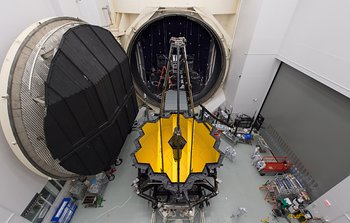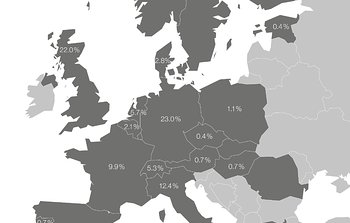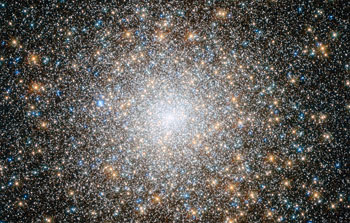From the desk of the ESA/Hubble (and now also ESA/JWST) Project Scientist
Another very busy and successful year is coming to an end. 2017 has seen much activity on many different fronts, including some personal and professional developments that I am delighted to share with you all: I have recently joined colleague Pierre Ferruit as ESA Project Scientist for the NASA/ESA/CSA James Webb Space Telescope, scheduled for launch in 2019. I will be focused on science policies and the relations with the community (yes, all of you!), while Pierre’s focus will be on NIRspec and MIRI and the interface with the Guaranteed Time Observations (GTO) teams. This is very exciting! Webb will be such a superb observatory and for both of us the prime goal is to help make it even more successful than Hubble, for all of you. The first direct consequence of this change is that this Science Newsletter will also, from now on, bring you news and announcements regarding James Webb, which may also be relevant to the Hubble community.
For example, you can find here the solicitation for ideas for Webb Early Release Observations (EROs). These will be among the first images and spectra to be taken during the telescope’s commissioning phase and will be used to showcase the capabilities of the observatory. EROs represent Webb’s debut to the world and are intended to have an immediate and dramatic appeal for a broad audience. We are eager to receive your suggestions!
You might have already seen the announcement about the JWST Cycle 1 call for proposals for general observer (GO) time. The deadline for submission is 6 April 2018. You can find here all the details you need to know to apply for James Webb time in Cycle 1.
Of course, I will still maintain my involvement with Hubble, and continue to explore ways to exploit the scientific synergy between the two observatories, as they will likely overlap for several years. Hubble is still going very strong, with community interest as high as ever. This year we received a record number of 1208 proposals. The number of science papers produced this year is approximately 800 and we are still counting. This is the number we have come to expect for annual Hubble publications in the recent years. We take this opportunity to reflect on the trends in the science that Hubble produced in 2017, and discuss here the highest impact results for the year. Also find here a video showing off the best of the best of Hubble 2017. We are experimenting with adding more videos to the newsletter in the future and as such we would love to get your feedback on whether they enhance the value of our communications with you all!
Finally, we say goodbye and “thank you” to one of three European representatives on the Hubble Space Telescope Users Committee, the STUC. Søren Larsen is rotating off the committee after serving for three years. I asked Søren to share some impressions on his tenure in the STUC, and you can find his insight here.
James Webb also has a newly formed User Committee, the JSTUC. There are three European representatives on the JSTUC as well, who are eager to hear from you all. We will introduce them in the next issue of this newsletter.
On to next year!
Wishing all of you and your families peaceful and restful holidays and a very successful and productive 2018!
Contacts
Antonella Nota
ESA HST Project Scientist, ESA JWST Project Scientist for GuestObservers
Email: hubblenewseurope@stsci.edu

|
21 December 2017: As you all know, James Webb is a joint mission between NASA, ESA and CSA. It will be a versatile observatory allowing astronomers to study targets ranging from our own Solar System to the most distant galaxies: James Webb has been built to observe galaxies as they form. We will be able look back at the first few 100 million ...
|
| Read more |

|
21 December 2017: As we approach the end of the year, it is always fun to look back on all of the beautiful science that Hubble has produced within the last twelve months. 2017 has been a very productive scientific year for our (still) favourite telescope. As of December 20, 775 refereed papers based on Hubble data were published in 2017!
As always ...
|
| Read more |

|
21 December 2017: The NASA/ESA/CSA James Webb Space Telescope (JWST) Early Release Observations (ERO) will be among the first images and spectra taken during the commissioning of the observatory after its launch, now planned for the second quarter of 2019. They represent JWST’s debut to the world and are intended to have immediate and dramatic appeal for a broad audience ...
|
| Read more |

|
21 December 2017: I just finished my 3-year term as an ESA representative on the Space Telescope User’s Committee (STUC) and this seems like a good moment to look back and reflect on my experience on the committee.
Firstly, a few words about how the STUC operates: The committee meets twice a year at the Space Telescope Science Institute (STScI) and has ...
|
| Read more |